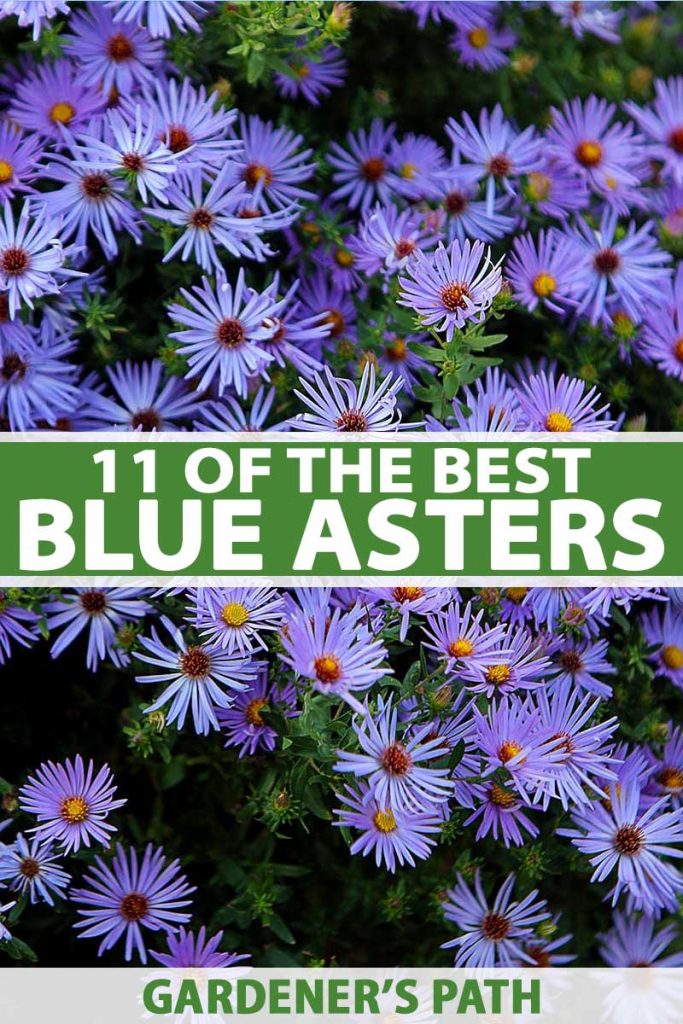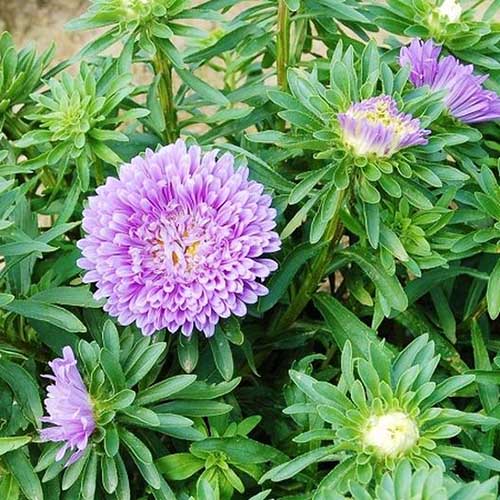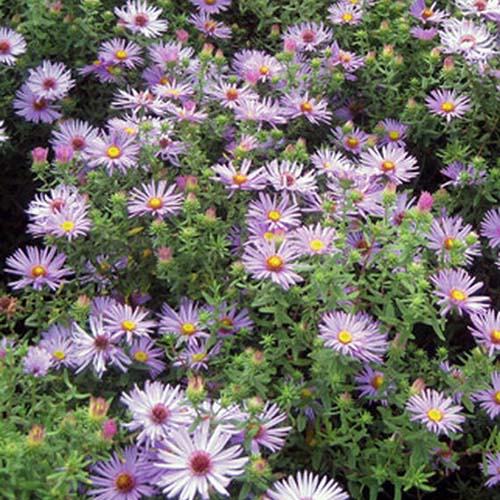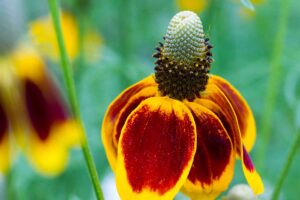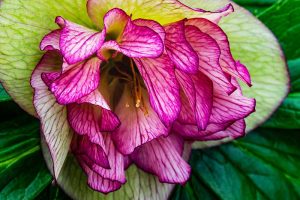Asters are members of the large Asteraceae family of plants that includes chrysanthemums, daisies, sunflowers, and yarrow.
They are daisy-like flowers that generally bloom from summer into fall.
Perennial varieties are suited to USDA Hardiness Zones 3 to 8, while annuals grow in all temperate zones.
They may be large, like the three- to five-inch blooms of an annual peony China aster, or they may be small, like the half-inch blossoms of a perennial wood aster.
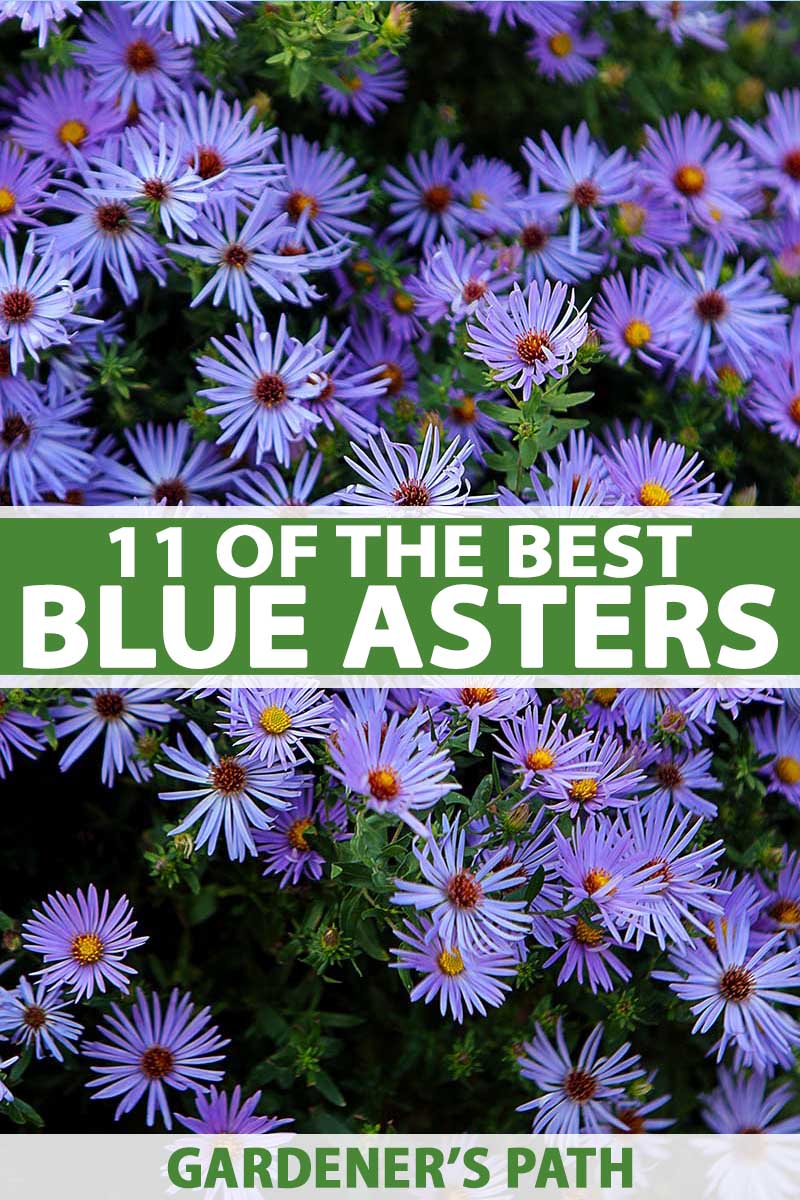
We link to vendors to help you find relevant products. If you buy from one of our links, we may earn a commission.
Pollinators like bees, butterflies, moths, and other beneficial insects are attracted to the pollen, while foraging birds feast on the seeds. This is especially true of native species.
In our aster growing guide, we discuss how to grow and care for numerous species and cultivated varieties.
In this article, we introduce 11 of the best blue asters.
Here’s the lineup:
11 of the Best Blue Aster Varieties
Except as noted, bloom times are from late summer into fall. With deadheading, plants may continue to flower until the first frost.
Please note:
Perennial asters, especially native species, are vigorous growers. They are known to spread aggressively via extensive root systems and self-sowing.
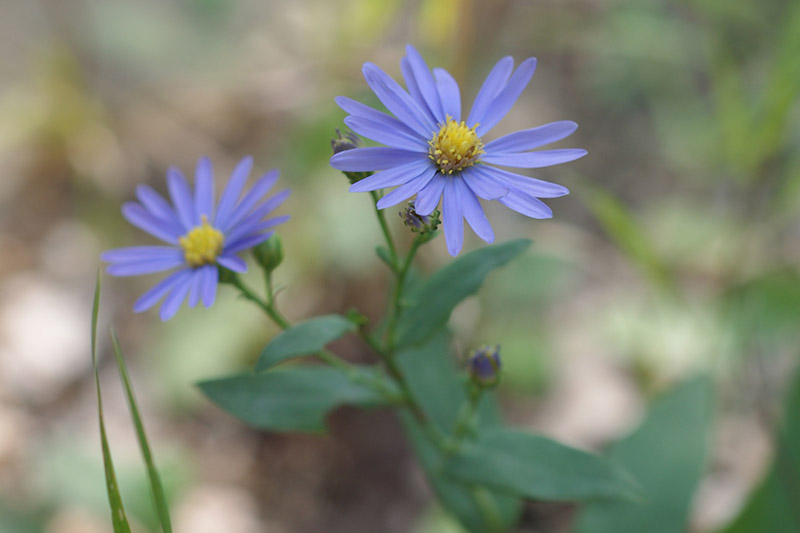
Be sure to read our 21 tips for managing perennial asters so you can maximize your enjoyment of these dynamic plants.
Also, plants grown in humid regions may be prone to fungal infections due to excessive moisture. However, while this may affect the leaves, it generally has little effect on the flowers.
According to the Chicago Botanic Garden’s A Comparative Study of Cultivated Asters, New England species and cultivars may suffer from powdery mildew, and New York types may be especially susceptible to rust.
To avoid both, be sure to take mature dimensions into account when spacing plants, to allow for optimal airflow and inhibit moisture buildup.
1. Alpine
The Alpine aster, Aster alpinus, is an early-blooming, non-native perennial species that flowers from spring into summer.
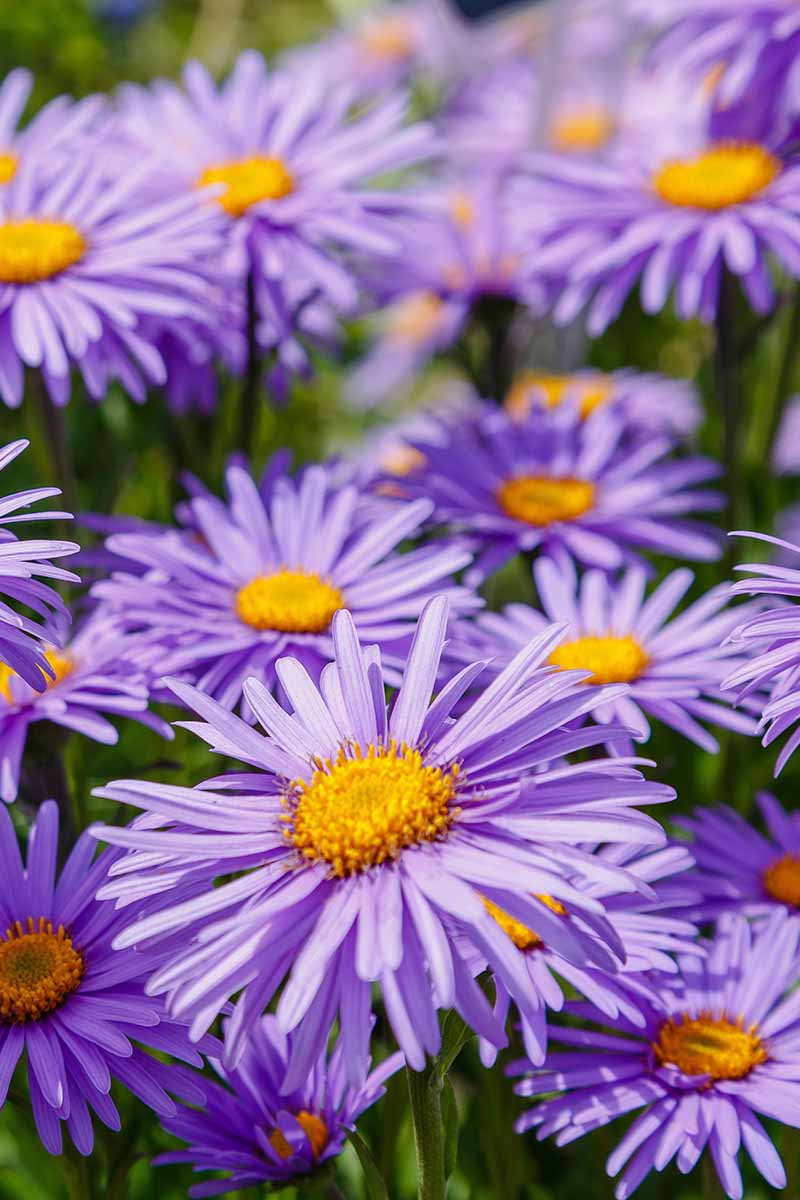
This is a low-profile plant with mature heights ranging from eight to 12 inches.
It has a clumping growth habit and medium-green foliage.
Also known as the blue Alpine daisy, this non-native perennial bears one flower per stem that measures about one inch across.

Each has a yellow disk surrounded by a single layer of rays with lavender overtones.
You can find 2000 seeds available from Outsidepride via Amazon.
There are numerous cultivars, such as the 15-inch-tall ‘Goliath,’ with its three-inch blossoms. Expect a maximum width of 12 inches, and space accordingly.
This is an excellent choice for rock gardens, border edging, and containers where compact growth and petite stature are desired.
Please see our guide to growing Alpine asters for more information on this species.
2. Blue Bayou
Symphyotrichum novi-belgii Showmakers® ‘Blue Bayou’ is a cultivated variety of the native perennial New York aster, S. novi-belgii.
Also known as the Michaelmas daisy, the start of blooming often coincides with the traditional Christian feast day of St. Michael, September 29th, hence the name.
This cultivar is a compact variety that reaches heights of 10 to 12 inches, making it very different from the two- to four-foot native species from which it originates.
Its full-double blooms have violet overtones and consist of dense rays with no visible center disks.
They measure about one inch across and are borne on individual stems, unlike the single blooms clustered in panicles of the original species.
Space to accommodate a maximum width of 18 inches.
The short stature and compact nature of this type make it suitable for border edges, containers, and rock gardens.
3. Blue Wood
The blue wood aster, S. cordifolium, is a tall native perennial species that reaches mature dimensions of two- to five-feet tall.
It has an upright growth habit, and arching stems laden with panicles, or clusters of blossoms.
The flowers measure approximately one-half inch across. They consist of a single layer of pale to bright blue rays that surround a yellow center disk.

Space to accommodate a maximum width of 36 inches.
The tiny blossoms of this somewhat weedy wildflower show best en masse. Give them room to spread beside perimeter fences, and in informal hedgerows and dedicated islands.
Find S. cordifolium seeds now from Seedville via Amazon in packages of 100.
4. Color Carpet
Callistephus chinensis dwarf ‘Color Carpet’ blue is a non-native cultivated variety of the Chinese aster that grows to a diminutive eight inches tall. It is an annual.
This plant has a clumping growth habit and medium-green foliage.
Lavender-tinted, semi-double blossoms are borne on individual stems. They measure approximately three inches wide. The multiple layers of rays partially obscure the yellow center disks.
Please see our complete guide to growing China asters.
Expect a maximum spread of 12 inches, and space accordingly.
This variety makes an excellent container plant, small bedding specimen, vibrant border edging, and rock garden feature.
Find seeds now from Eden Brothers in one-ounce or quarter-pound packages. Additionally, ‘Color Carpet’ is available in bright red, also at Eden Brothers.
5. Lady in Blue
S. novi-belgii ‘Lady in Blue’ is a low-profile cultivated variety of the native perennial New York aster. It has a mature height of 10 to 12 inches tall.
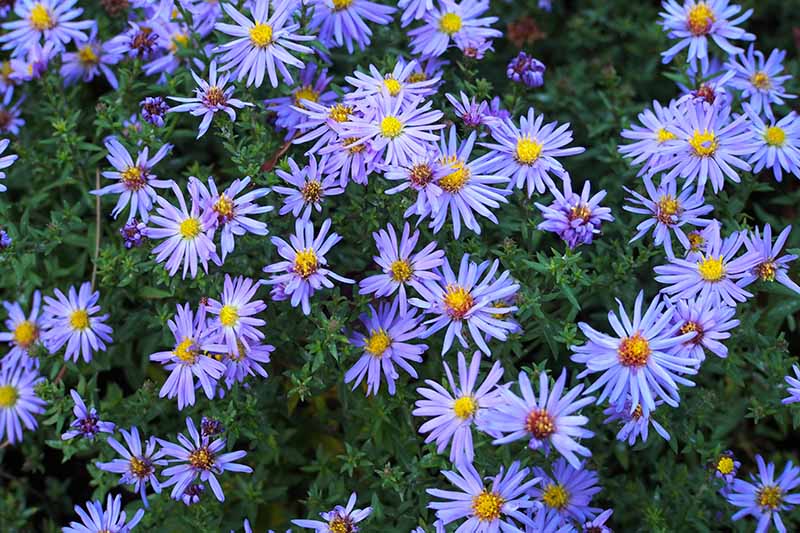
This type has a compact growth habit and medium green foliage.
The semi-double flowers measure approximately one inch across. The rays tend toward lavender tones and surround yellow center disks.
Allow 18 inches between plants to accommodate mature dimensions.
Best uses include border edging, and container specimens where a small flower is desired.
6. Marie Ballard
S. novi-belgii ‘Marie Ballard’ is a cultivated variety of the native perennial New York aster. Its height ranges from 30 to 36 inches.
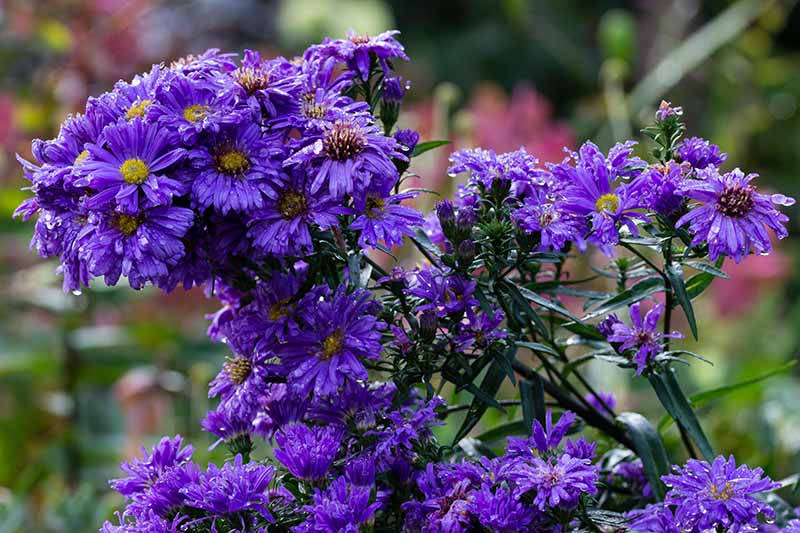
This kind has an upright growth habit and dark green leaves.
Also known as the Michaelmas daisy, it has two- to three-inch full-double lavender tinted blooms with golden yellow center disks.
Allow 36 inches between plants to accommodate mature dimensions.
This large cultivar does best in informal mass plantings where it can spread, such as roadside perimeters and dedicated islands.
7. October Skies
S. oblongifolium ‘October Skies,’ aka S. oblongifolius ‘October Skies,’ is a cultivated variety of the native perennial aromatic aster. It tops out at 18 to 24 inches.
It has a compact, mounding growth habit, and blue-green leaves that are aromatic when crumpled.
Single-layer blossoms measure up to one inch across and have lavender-tinged rays surrounding yellow center disks.
Space plants 24 inches apart to accommodate maximum dimensions.
This cultivar shows best en masse and is well-suited to informal woodland settings.
8. Peony Duchess Blue
C. chinensis ‘Peony Duchess Blue’ is a non-native annual China aster that grows between 24 and 28 inches tall.
It has an upright growth habit, medium green leaves, and one bloom per stem.

C. chinensis ‘Peony Duchess Blue’
Full-double blossoms with violet overtones measure two to three inches across. They have turned-in, cuplike petals with no visible center disks.
Space plants 18 inches apart to allow for maximum widths.
The showy blossoms of this cultivar are suited to specimen or mid-position plantings in beds and containers.
Find seeds now from Amazon in one-gram packages.
9. Raydon’s Favorite
S. oblongifolius ‘Raydon’s Favorite,’ aka S. oblongifolium ‘Raydon’s Favorite,’ is a cultivated variety of the native perennial aromatic aster. Heights range from 24 to 36 inches.
It has gray-green foliage and a mounding growth habit. When the leaves are crumpled, they smell like mint.
S. oblongifolius ‘Raydon’s Favorite’
The fragrant blossoms of this type measure one inch across, and consist of lavender-tinged rays surrounding a yellow center disk.
Plant 24 inches apart to accommodate maximum dimensions.
Use it in butterfly and wildflower gardens, informal hedgerows, perennial beds and borders, mass plantings, and roadside perimeters, where it has room to spread.
10. Sky Blue
Sky blue aster, S. oolentangiense, is a native perennial with a mature height of 24 to 36 inches.
This plant has an upright growth habit and delicately branching medium-green foliage with panicles, or clusters of blossoms.

The flowers measure about one inch across, and consist of a single layer of light-hued blossoms that shade toward lavender, with yellow center disks.
Expect a maximum spread of 24 inches, and plant accordingly.
Best uses include slope erosion control, roadside borders, and mass plantings.
For more information on this species, consult our guide to growing sky blue asters.
11. Smooth Blue
Smooth blue aster, S. laevis, is a tall native perennial species that tops out at 24 to 36 inches.
It has upright, slightly branching stems and gray-green leaves that are noteworthy for being very smooth, unlike the hairy foliage common to asters.
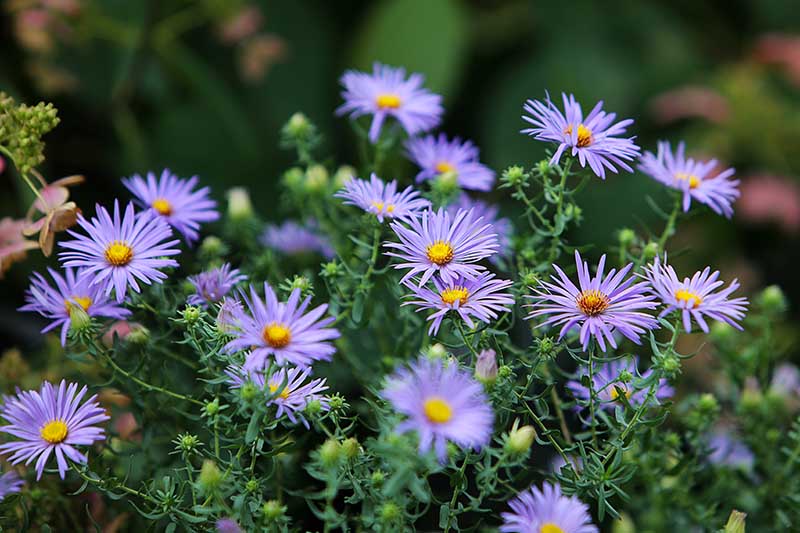
The flowers are approximately one inch wide. They consist of a single layer of rays that shade toward lavender, surrounding a yellow center disk.
Expect a maximum width of 24 inches, and space accordingly.
This native species is perfect for informal butterfly gardens, hedgerows, roadside perimeters, rocky slopes, wildflower gardens, and woodland settings.
There is a noteworthy cultivar of this species called ‘Bluebird.’ It has violet overtones and reaches heights of three to four feet.
Varied and Vigorous
These 11 asters vary from annual to perennial, one bloom per stem to multiple, single rows of rays to double, and native and non-native species to cultivated varieties.
From the early-blooming petite Alpine to the late-blooming New York, all of the species and cultivars included provide eye-catching color and rich texture.
With such an array to choose from, you’re sure to find new favorites to grow in your outdoor living space.
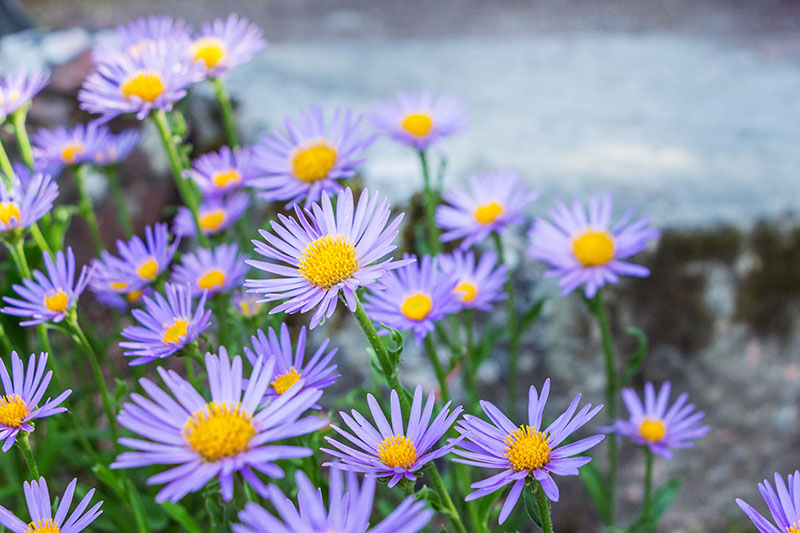
If you are gardening in small spaces or cultivating in containers, consider compact perennial varieties, or annuals that won’t take up ever-enlarging real estate from year to year.
And if you fall in love with some of the taller varieties, be sure to give them room to roam as nature intended, for masses of blossoms that blanket your gardens with color.
Take out your garden planner now and reserve space for some of nature’s bluest asters. Then come back and share a picture of your planting in the comments section below!
If you enjoyed discovering these colorful flowers, you’ll need these guides next:
